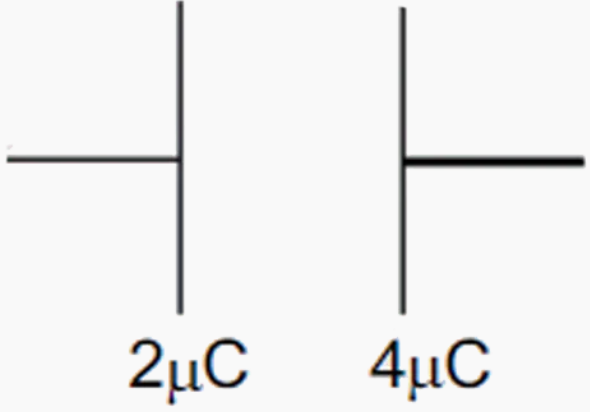The plates of a parallel-plate capacior are given equal positive charges .What will be the potential difference between the plates ? What will be the charges on the facing surfaces and on the outer surfaces ?
Step by step video & image solution for The plates of a parallel-plate capacior are given equal positive charges .What will be the potential difference between the plates ? What will be the charges on the facing surfaces and on the outer surfaces ? by Physics experts to help you in doubts & scoring excellent marks in Class 12 exams.
Topper's Solved these Questions
- BOOK - HC VERMACHAPTER - CAPACITORSEXERCISE - Objective 112videos
CAPACITORS
- BOOK - HC VERMACHAPTER - CAPACITORSEXERCISE - Objective 27videos
CAPACITORS
- BOOK - HC VERMACHAPTER - CAPACITORSEXERCISE - Worked Out Examples23videos
CAPACITORS
- BOOK - HC VERMACHAPTER - BOHR'S MODEL AND PHYSICS OF THE ATOMEXERCISE - Exercises46videos
BOHR'S MODEL AND PHYSICS OF THE ATOM
- BOOK - HC VERMACHAPTER - DISPERSION AND SPECTRAEXERCISE - Exercises11videos
DISPERSION AND SPECTRA
Similar Questions
A parallel plate capacitor of 300μF is charged to 200V. If the distance between its plate is halved, what will be the potential difference between the plates and what will be the change in stored energy ?
View SolutionOne plate of a parallel plate capacitor is given a charge of 2μC. What charge will appear on four surfaces of the capacitor?
View Solution
Knowledge Check
- Question 1 - Select One
If the plates of a parallel plate capacitor are not equal in area then quantity of charge
AOn the plates will be same but nature of charge will differBOn the plates as will as nature of charge will be differentCOn the plates will be different but nature of charge will be sameDAs well as nature of charge will be same - Question 2 - Select One
In a parallel plate capacitor of capacitor 1μF two plates are given charges 2μC and 4μC the potential difference between the plates of the capacitor is
 A2 voltB1 voltC4 voltD3 volt
A2 voltB1 voltC4 voltD3 volt - Question 3 - Select One or More
The plates of a parallel plate capacitor are, not exactly parallel. The surface charge density therefore :
Ahigher at the closer endBthe surface charge density will not be uniformCeach plate will have the same potential at each point.Dthe electric field is smallest where the plates are closest.
A uniformly distributed space charge fills up the space between two large parallel plates separated by a distance d. The potential difference between the plates is equal to zero ? What will then be the field strength near the other plate ?
View SolutionIn an isolated parallel plate capacitor of capacitance C, the plates have charge Q1 and Q2. The potential difference between the plates is
View SolutionThe plates of a parallel plate capacitor are, not exactly parallel. The surface charge density therefore :
View SolutionWhen a metal slab is placed between the charged identical , parallel plates , the potential difference between the plates
View SolutionAn isolated parallel-plate capacitor of capacitor C has paltes X and Y. If plate X is given charge Q, the potential difference between X and Y Is
View Solution

